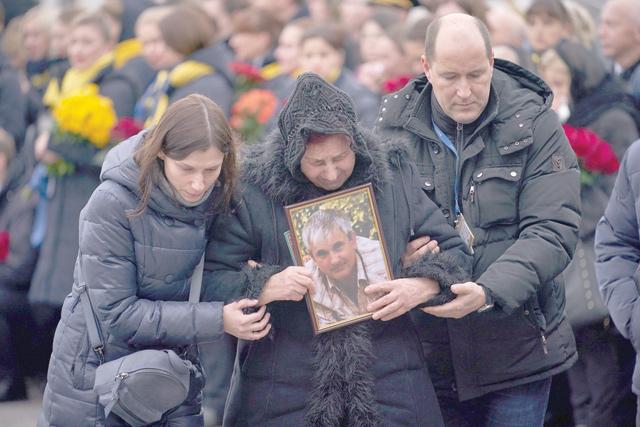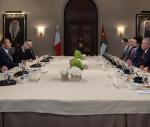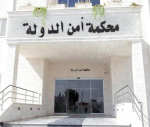You are here
Iran confirms two missiles fired at Ukraine airliner
By AFP - Jan 21,2020 - Last updated at Jan 21,2020

This handout photo taken and released by the Ukrainian presidential press service on January 19, shows relatives and colleagues as they attend a tribute ceremony at Kiev's Boryspil airport for the 11 Ukrainians who died in a plane mistakenly shot down by Iran during a spike in tensions with Washington (AFP photo)
TEHRAN — Iran has confirmed two missiles were fired at a Ukrainian airliner brought down this month, in a catastrophic error that killed all 176 people on board and sparked angry protests.
The country's civil aviation authority said it has yet to receive a positive response after requesting technical assistance from France and the United States to decode black boxes from the downed airliner.
The Kiev-bound Ukraine International Airlines plane was accidentally shot down shortly after takeoff from Tehran's Imam Khomeini International Airport on January 8.
Iran has come under mounting international pressure to carry out a full and transparent investigation into the air disaster.
"Investigators... discovered that two Tor-M1 missiles... were fired at the aircraft," Iran's Civil Aviation Organisation said in a preliminary report posted on its website late Monday.
It said an investigation was ongoing to assess the bearing their impact had on the accident.
The statement confirms a report in The New York Times which included video footage appearing to show two projectiles being fired at the airliner.
The Tor-M1 is a short-range surface-to-air missile developed by the former Soviet Union that is designed to target aircraft or cruise missiles.
Iran had for days denied Western claims based on US intelligence reports that the Boeing 737 had been shot down.
It came clean on January 11, with the Revolutionary Guards' aerospace commander Brigadier General Amirali Hajizadeh accepting full responsibility.
But he said the missile operator who opened fire had been acting independently.
The deadly blunder triggered days of student-led protests mainly in the Iranian capital.
Supreme leader Ayatollah Ali Khamenei said on Friday that the demonstrations were unrepresentative of the Iranian people and accused the country’s enemies of exploiting the air disaster for propaganda purposes.
In its report, the Civil Aviation Organisation said it was “impossible” for it to read the flight data and cockpit voice recorders — commonly known as black boxes — because they were so advanced.
But it suggested Iran wants to keep them for now.
“If devices are provided, the information [on the black boxes] can be restored and retrieved in a short period of time,” it said.
The aviation body said it had asked its French and US counterparts, the BEA and NTSB respectively, to provide a list of the equipment required to read the black boxes.
It said it had also sought the transfer of the equipment, but added that neither the BEA nor NTSB had “so far responded positively”.
It said it had acquired the list nonetheless, without saying how, and hinted it would use it to buy the equipment itself.
The report said that based on passports used to board Flight PS752, there were 146 Iranians, 11 Ukrainians including nine crew members, 10 Afghans and four Swedes on the ill-fated airliner.
Canada, which says 57 of its nationals were on the plane, has repeatedly asked Iran to hand the black boxes over to Ukraine or France for expert analysis.
US-Iran tensions
The 737 was downed when Iran’s air defences had been on high alert hours after its armed forces fired more than 20 ballistic missiles at US troops stationed in Iraq.
That was carried out in reprisal for a January 3 US drone strike that killed Iran’s most prominent military commander, Qassem Soleimani, near Baghdad airport.
US President Donald Trump had been poised to retaliate for the missile attack, but refrained after the missiles caused no casualties.
It was the second time in little more than six months that Iran and its sworn enemy have been on the brink of war.
In June 2019, Trump had approved a strike on Iran in response for the downing of a US drone in the Gulf, before calling it off at the last minute.
Longstanding US-Iran tensions have soared since May 2018 when Trump withdrew from a nuclear deal that offered Tehran sanctions relief in return for curbs to prevent it acquiring nuclear weapons.
Washington says it seeks to rein in Iran’s ballistic missile programme as well as its “destabilising behaviour” in the region.
It has since slapped crippling sanctions on Iran, which denies it wants to acquire nuclear weapons and has hit back by progressively rolling back commitments to the nuclear deal.
Related Articles
KIEV — Ukraine said on Tuesday it was too early to conclude that a Kiev-bound passenger plane was shot down by Iran in January because of hu
TEHRAN — Tehran will pay $150,000 to each family of the 176 victims killed when a Ukrainian passenger plane was mistakenly shot down by Iran
NEW YORK — Global stocks mostly drifted lower on Friday as investor appetite waned at the week’s end, US job creation disappointed and damag

















